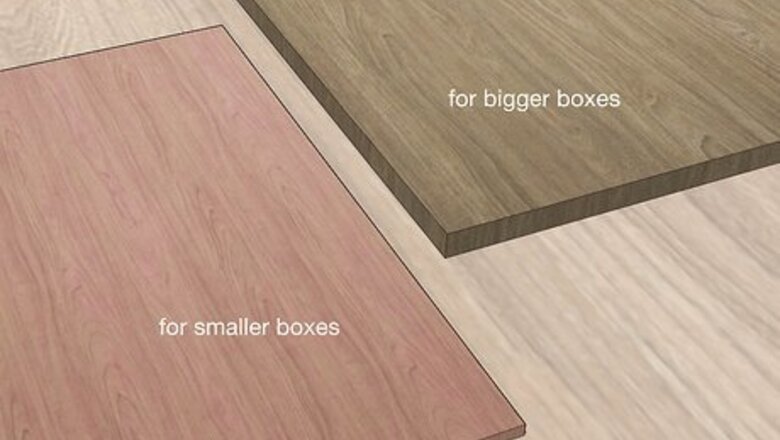
views
Making a Wooden Box with a Hinged Lid

Choose your wood. You can use repurposed wood from previous projects, boards from broken down pallets, or you can purchase and cut new wood. Consider what your box will be used for. For example, if you're making a jewelry box, consider thin pieces of cedar, ash or oak. It will be easier to make a smaller box with thinner wood. Save larger pieces or boards for bigger boxes. This will also prevent you from having to do too much trimming.
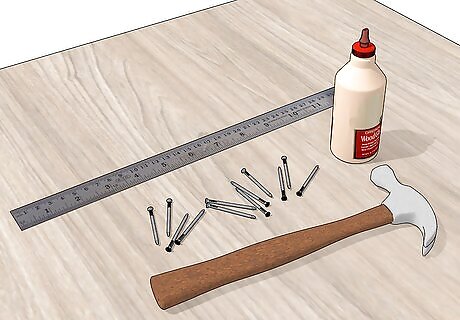
Gather your supplies. Keep all your basic tools in your workspace. If using power tools, make sure that you have access to power outlets. At the very least, you'll want a ruler, hammer, nails, wood glue or putty, and of course, your boards. If using power tools, use caution and always wear eye protection.
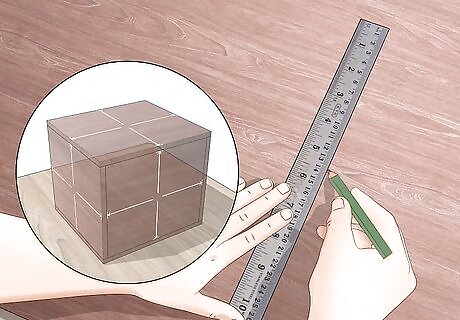
Measure and mark your boards. First, you'll need to decide on the size of your box. Specifically, you'll want to determine how long, wide, and tall to make your box. Then, mark the measurements on your boards using a ruler and pencil. If you're building a box for a specific purpose or to hold a certain item, measure the item to ensure it will fit inside your finished box.
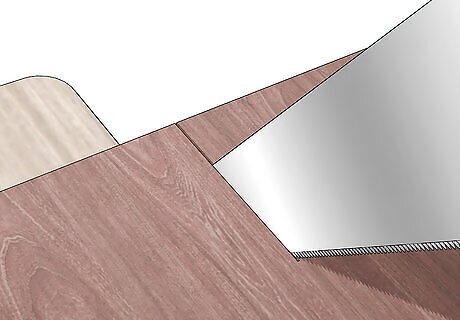
Cut your boards, if not already to size. Use a hand or circular saw to cut the boards according to your measurements. Remember you'll need four boards for the sides, one for the base, and one for your lid. Power tools can make the job easier, but are not necessary. You can easily make your box using a screwdriver, carpenter's square, hand saw, and hammer.

Assemble the side pieces using a butt joint. Join the sides together at a right angle using glue between the joints for durability. At this point, it should look like a square with no base or lid attached yet. Next, hammer or drill in finishing nails, wood screws or dowels. You may want to use clamps to hold the glued sides together while you drill nails or screws into them. If you're using dowels, drill a hole through the side of one piece into the side of another. Use a wooden dowel to pin the pieces together in an "L" shape. After the sides are pinned, cut the dowel flush with the sides. You can even drill at an angle with a drill bit. First, use a smaller bit to act as a guide. Then use a larger bit to make the bigger part of the hole.

Attach the sides to the base. Make sure the sides sit evenly on the base or are snug around the base, depending on your design. Use glue to attach the base and sides. Hammer or drill in finishing nails, wood screws, or dowels. Allow your box to dry thoroughly before sealing or using it.
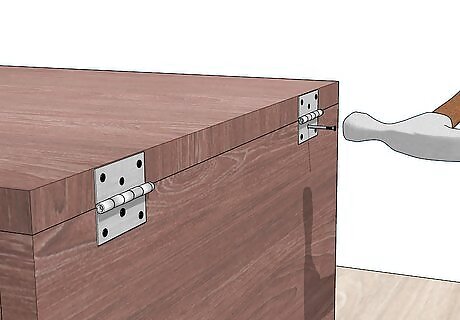
Attach a hinged lid to the box. Set the lid on the box so the lid and side are flush, then measure and mark where you'd like your hinges to be. Keep the hinge knuckle facing out from the back of your box and drill or hammer to attach it to the side and then the lid. When laying out the hinges, it is important that you square them to the top and to the sides of the case. Otherwise, the door will not close or open correctly. It's helpful to clamp the side and lid together when measuring and installing the hinges.
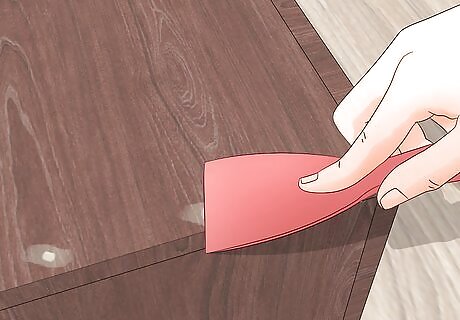
Fill any nail holes. Use a wood putty and putty knife to fill nail holes. Let the putty dry completely before sanding the areas smooth. Filling and sanding nail holes will add a professional look to your project. Feel free to omit this step if you're not concerned with decorative aspects.
Making a Wooden Box with a Sliding Lid

Choose your wood. You can use repurposed wood from previous projects, boards from broken down pallets, or you can purchase and cut new wood. Consider what your box will be used for. For example, if you're making a jewelry box, consider thin pieces of cedar, ash or oak. It will be easier to make a smaller box with thinner wood. Save larger pieces or boards for bigger boxes. This will also prevent you from having to do too much trimming.
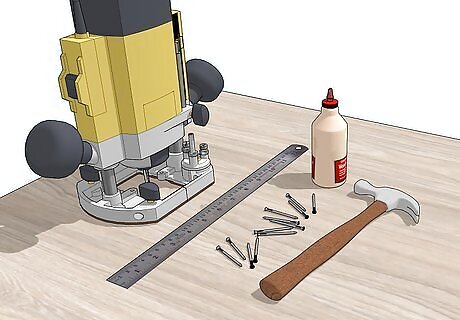
Gather your supplies. Keep all your basic tools in your workspace. If using power tools, make sure that you have access to power outlets. At the very least, you'll want a ruler, hammer, nails, wood glue or putty, and of course, your boards. If using power tools, use caution and always wear eye protection.
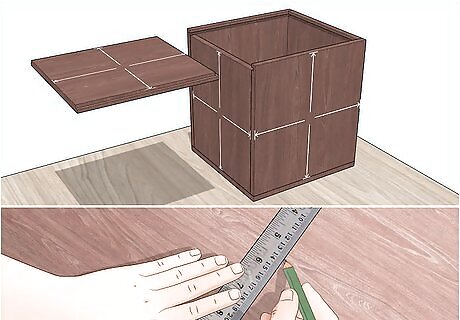
Measure and mark your boards. First, you'll need to decide on the size of your box. Specifically, you'll want to determine how long, wide, and tall to make your box. Keep in mind you'll need to take grooves into account and the fact that your lid will need to be narrower in order to slide into them. Then, mark the measurements on your boards using a ruler and pencil. If you're building a box for a specific purpose or to hold a certain item, measure the item to ensure it will fit inside your finished box.
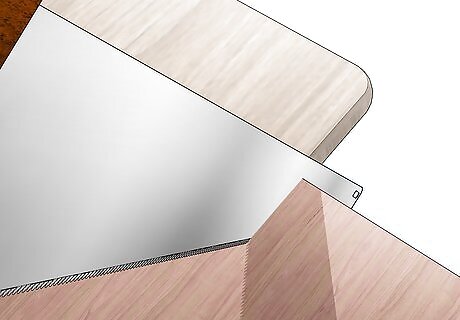
Cut your boards, if not already to size. Use a hand or circular saw to cut the boards according to your measurements. Remember you'll need four boards for the sides, one for the base, and one for your lid. Power tools can make the job easier, but are not necessary. You can easily make your box using a screwdriver, carpenter's square, hand saw, and hammer.
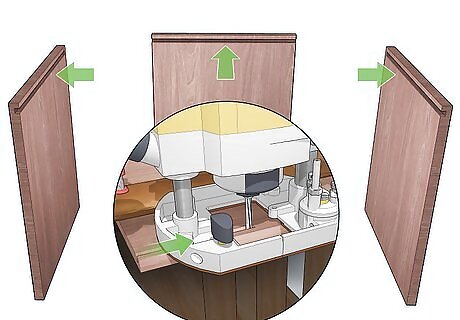
Cut grooves into the side boards. Use a table saw or router with a guide to cut a straight horizontal groove near what will be the top and inside of the box. The groove should run about 1/8" deep along the top so your lid can slide into place. Make sure to cut equal grooves into three sides of your box.
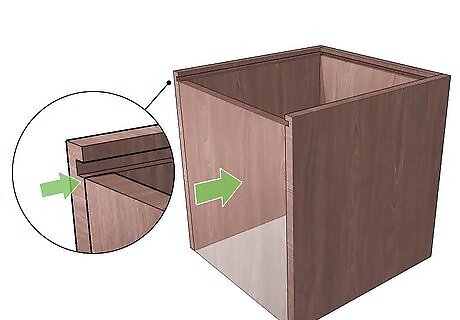
Cut the front side of your box. First, take one of the sides that you've already cut a groove into and measure from the top, where the lid will be, to the bottom of the groove you cut. Use the same distance to cut a straight horizontal line across the top of your box front. After this point, you should be able to test sliding the lid into the grooves and over the front if you clamp the sides together.
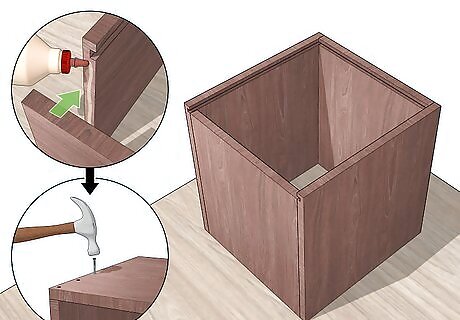
Assemble the side pieces using a butt joint. Make sure the grooves are facing inward. Join the sides together at a right angle using glue between the joints for durability. At this point, it should look like a square with no base or lid attached yet. Next, hammer or drill in finishing nails, wood screws or dowels. You may want to use clamps to hold the glued sides together while you drill nails or screws into them. If you're using dowels, drill a hole through the side of one piece into the side of another. Use a wooden dowel to pin the pieces together in an "L" shape. After the sides are pinned, cut the dowel flush with the sides.
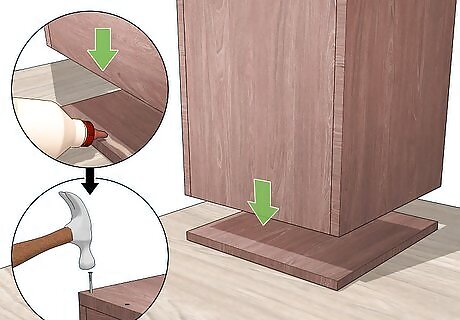
Secure the sides to the base. Make sure the sides sit evenly on the base or are snug around the base, depending on your design. Use glue to attach the base and sides. Hammer or drill in finishing nails, wood screws, or dowels. Allow your box to dry thoroughly before sealing or using it.
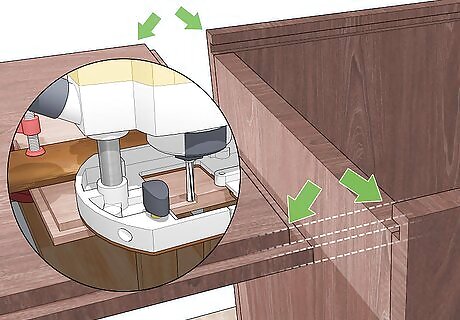
Cut the groove for the lid. If you want your lid to be flush with the sides of the box, use a saw to cut a groove along all the sides of the lid but the front. Slide the lid into the groves and over the top of the box. For example, if your side grooves were cut 1/8" from the top and 1/8" deep, you'll want to cut the top edges of your lid 1/8" down from the sides.
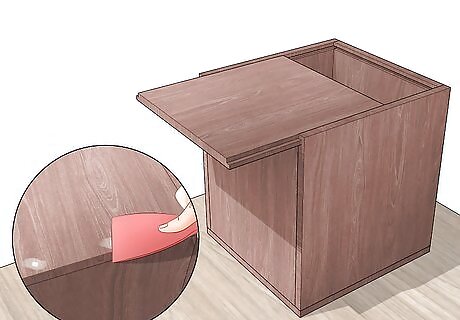
Fill any nail holes. Use a wood putty and putty knife to fill nail holes. Let the putty dry completely before sanding the areas smooth. Filling and sanding nail holes will add a professional look to your project. Feel free to omit this step if you're not concerned with decorative aspects.




















Comments
0 comment